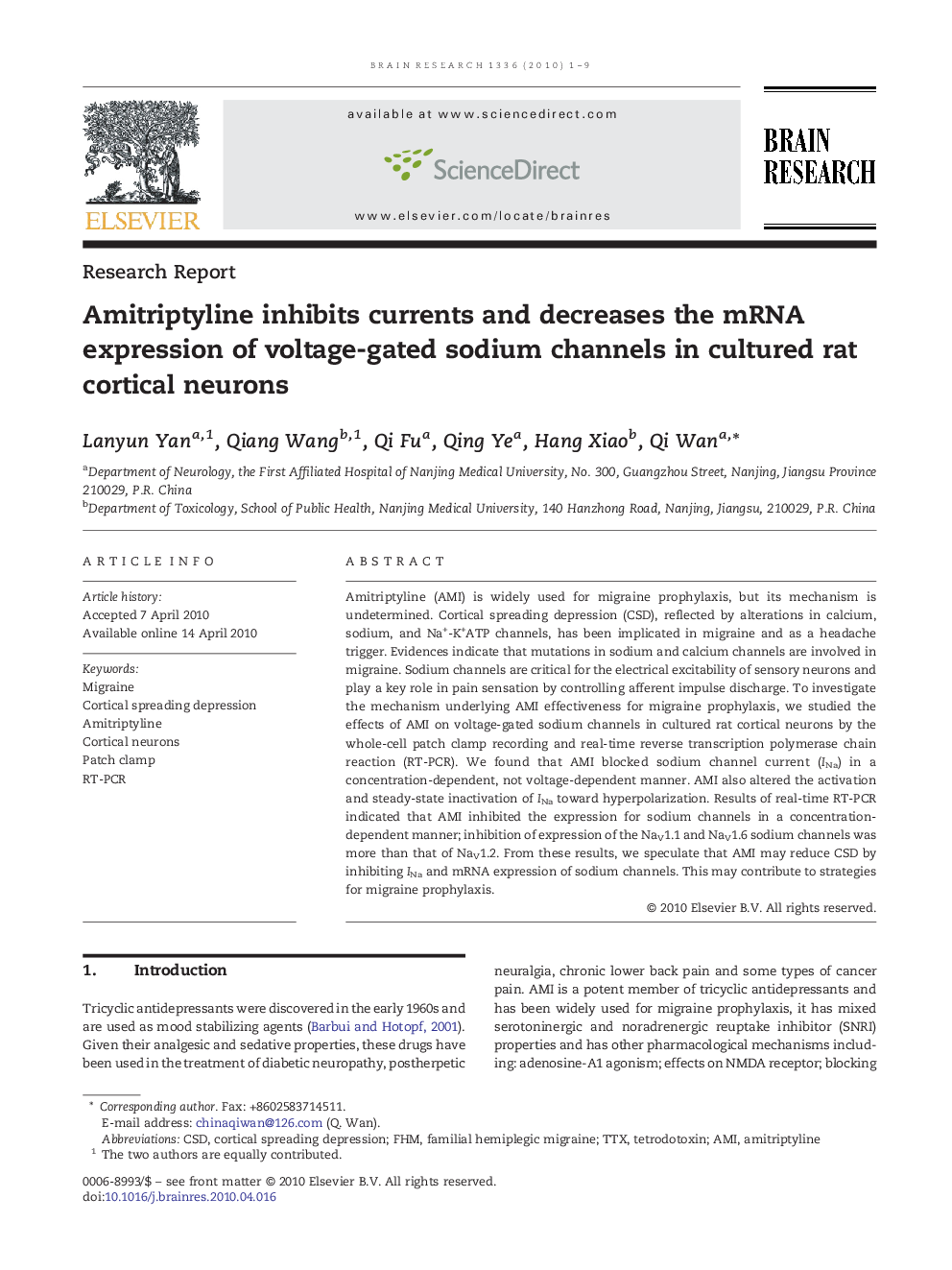| Article ID | Journal | Published Year | Pages | File Type |
|---|---|---|---|---|
| 4326956 | Brain Research | 2010 | 9 Pages |
Amitriptyline (AMI) is widely used for migraine prophylaxis, but its mechanism is undetermined. Cortical spreading depression (CSD), reflected by alterations in calcium, sodium, and Na+-K+ATP channels, has been implicated in migraine and as a headache trigger. Evidences indicate that mutations in sodium and calcium channels are involved in migraine. Sodium channels are critical for the electrical excitability of sensory neurons and play a key role in pain sensation by controlling afferent impulse discharge. To investigate the mechanism underlying AMI effectiveness for migraine prophylaxis, we studied the effects of AMI on voltage-gated sodium channels in cultured rat cortical neurons by the whole-cell patch clamp recording and real-time reverse transcription polymerase chain reaction (RT-PCR). We found that AMI blocked sodium channel current (INa) in a concentration-dependent, not voltage-dependent manner. AMI also altered the activation and steady-state inactivation of INa toward hyperpolarization. Results of real-time RT-PCR indicated that AMI inhibited the expression for sodium channels in a concentration-dependent manner; inhibition of expression of the NaV1.1 and NaV1.6 sodium channels was more than that of NaV1.2. From these results, we speculate that AMI may reduce CSD by inhibiting INa and mRNA expression of sodium channels. This may contribute to strategies for migraine prophylaxis.
